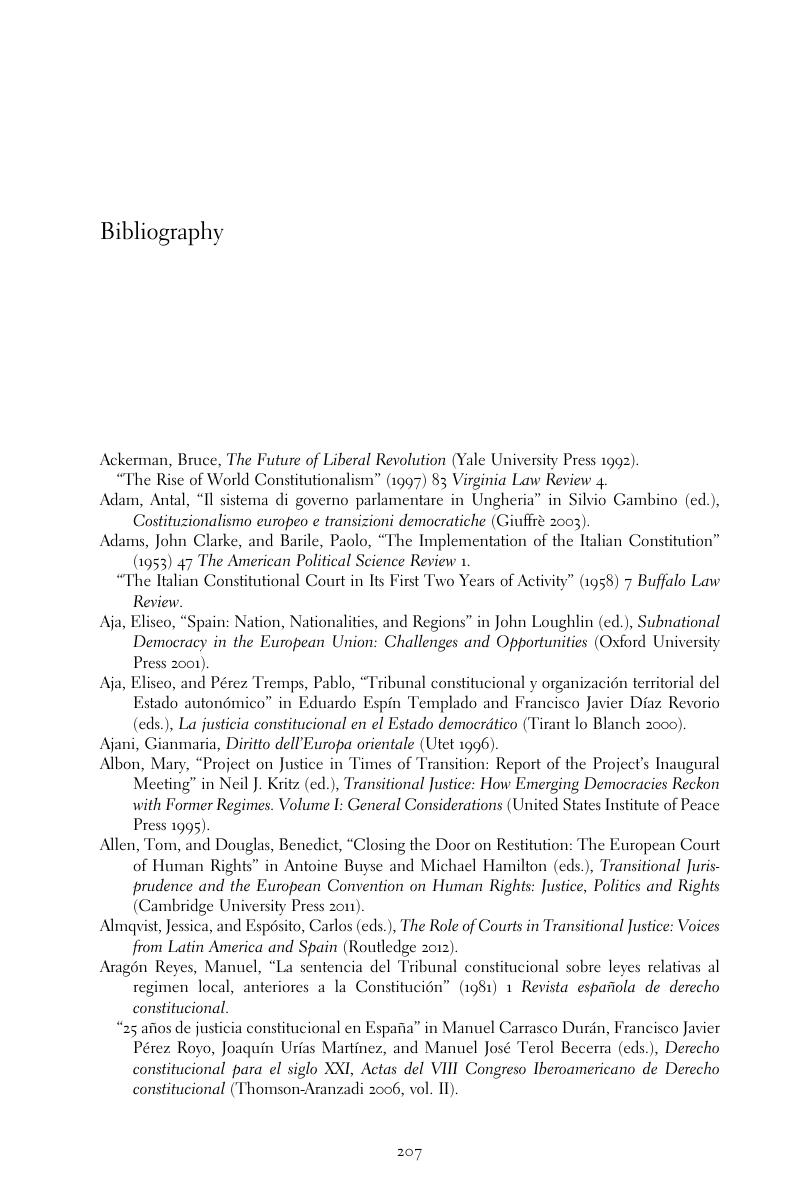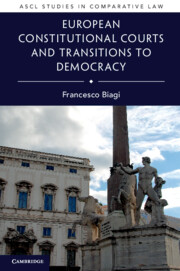Book contents
- European Constitutional Courts and Transitions to Democracy
- ASCL Studies in Comparative Law
- European Constitutional Courts and Transitions to Democracy
- Copyright page
- Dedication
- Contents
- Foreword
- Acknowledgments
- Notes on the Text
- Introduction
- 1 Democratic Transitions and Constitutional Courts
- 2 The First Generation
- 3 The Second Generation
- 4 The Third Generation
- 5 Comparing Three Generations
- Bibliography
- Index
- References
Bibliography
Published online by Cambridge University Press: 05 December 2019
- European Constitutional Courts and Transitions to Democracy
- ASCL Studies in Comparative Law
- European Constitutional Courts and Transitions to Democracy
- Copyright page
- Dedication
- Contents
- Foreword
- Acknowledgments
- Notes on the Text
- Introduction
- 1 Democratic Transitions and Constitutional Courts
- 2 The First Generation
- 3 The Second Generation
- 4 The Third Generation
- 5 Comparing Three Generations
- Bibliography
- Index
- References
Summary

- Type
- Chapter
- Information
- European Constitutional Courts and Transitions to Democracy , pp. 207 - 228Publisher: Cambridge University PressPrint publication year: 2020



